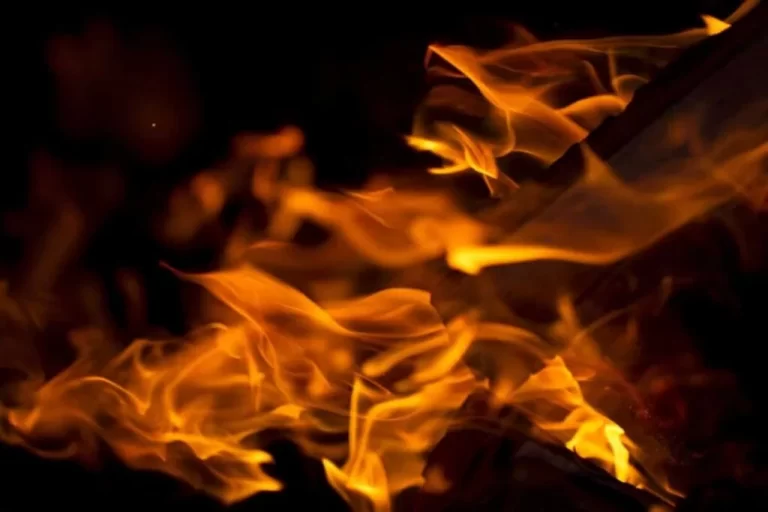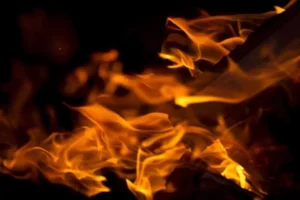
The current international standards that regulate the specifications and manufacturing requirements of sandwich panels are a safeguard for the end buyer, which allows them to obtain a product that complies with their specifications. Insulated panels’ fire resistance is related to the manufacturer’s certifications through American and European standards. Both standards are very similar in terms of requirements so let’s learn a little more about European standards.
INSULATED PANELS AND FIRE
Insulating panels fire resistance is one of the most relevant issues when using it as roofing and cladding material. Various types of buildings can be built with this prefabricated product, from those of the agricultural and veterinary type to those of a manufacturing nature, warehouses and leisure centers. In any case, a common question is about its resistance to fire. However, resistance is one of the elements to be analyzed, because more than that, the behavior of the material when fire is present must be known and understood. This means a broader point of view that refers to how the product reacts to spreading flames, generating dripping of molten material and producing smoke.
The answer to this question would be that, in very general terms, insulating panels have a good to excellent reaction to fire, however, this cannot be asserted if it does not comply with the applicable safety regulations.
The objective of this article is to provide general knowledge about panel’s attributes against fire that are available as product of its manufacturing processes, and how to select these according to the specific conditions of each project.
This content is based on European standards for European manufacturers. For American market, it will be necessary to see their equivalences.
EUROPEAN REGULATIONS
Major regulations for the manufacture of insulating panels in Europe:
- UNE-EN 14509: 2014 Self-supporting insulating double-sided metal sandwich panel. Factory made products. Specs.
- UNE-EN 13823: 2012 + A1: 2016 Reaction to fire tests of construction products, excluding floor coverings, exposed to thermal attack caused by a single burning object.
- UNE-EN 10169: 2011 + A1: 2012 Flat steel products, continuously coated with organic materials (pre-lacquered). Technical supply conditions.
- UNE-EN 13501-1: 2019 Classification based on the fire behavior of construction products and building elements. Part 1: Classification from data obtained in reaction to fire tests.
CURRENT VERSION OF THE STANDARD
With the unification of criteria by the European countries, minimum standards of compliance are established in many areas of manufacturing and material testing. This is when the manufacture of insulating panels is governed by the series of rules set out above.
Over the years, the same manufacturers reach significant shares of technological achievements on materials for the manufacture of the insulating panels. With this, the institutions establish more restrictive norms in order to increase the security guarantees in the construction systems and the buildings themselves to make them safer.
The latest version in force to date is UNE-EN 14509: 2014. This requires manufacturing under these criteria as of August 8, 2015 in order to be marketed and obtain the CE marking for those insulated self-supporting double-sided metal panels.
The main modification with respect to the previous regulation in its 2007 version and its 2009 revision is the evaluation of the reaction to fire performance. It is in this section where changes have been seen in the way of conducting tests and a new way of classifying them. This way of categorizing them affects the SBI standard (UNE-EN 13823) which refers to reaction to fire tests of construction products. With a modification in force in 2016 and to the UNE-EN 11925-2 standard, better known as the small burner test.
Among the changes are:
- Possibility of testing panels with covered edges, as long as in the panel manufacturing process, the core is completely protected on all sides by a metal sheet. And that at the time of its installation no cuts or drilling are required.
- Panels with asymmetric faces or with different sheet thicknesses on their sides, must be classified with the one with the lowest performance. Or where appropriate, the values corresponding to the tests for each of the faces must be specified.
To better understand the properties that we can obtain according to our requirements or needs in our projects, we must know the 4 factors that influence the conditions of regulatory compliance with this Euroclassification:
- The steel and its coatings,
- Typology of the insulating core.
- Design of the joint between panels.
- Panel mounting and fixing system.
Each of these sections deserves an exclusive article to talk about its properties, types and attributes; but at present we will focus on getting to know the classifications established by the regulations based on the tests that mainly affect the insulating core, which is one of the elements that have the greatest impact on compliance.
EUROCLASSES AND SUBCLASSES CLASSIFICATIONS FOR WALLS AND CEILINGS. STANDARD UNE-EN 13501-1: 2019
This classification is composed of a series of letters and numbers in a sequence that establishes the resistance to fire, smoke opacity and droplet/particle fall.
It is important to know this classification, since it will determine the type of panel to be used according to:
- Its use (commercial, residential, industrial, etc) or
- Its location or area in the building.
EUROCLASS: FIRE RESISTANCE OF INSULATING PANELS
Ratings begin with a letter and coding starts with the letter A, which are those materials that have the best performance against fire. Its benefits are less as the letters advance, until they reach F, which in simple words means that there is combustion under the action of a flame.
In the case of the sandwich panels, current European regulations do not allow the manufacturers to produce anything lower than C under their least restrictive conditions.
We must be clear that the definition of “contribution to fire” is considered the energy released by a product that influences the growth of fire in situations both before and after the start of it. What is explained in the following chart:
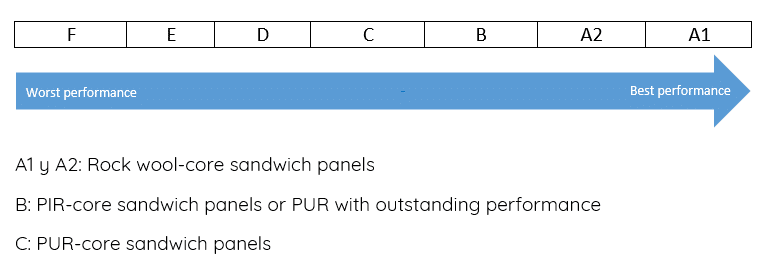
SUBCLASS: SMOKE OPACITY VALUE
This value establishes 3 classifications according to the production of smoke emitted when carrying out the controlled tests. The best value is represented by the S1 rating and the lowest is S3.

SUBCLASS: FALLING DROPS / PARTICLES
During the flame exposure test, it is also analyzed whether the core produces droplets or particles that could be a source of propagation of fire. They are marked according to the following criteria:

This is an example of this classification for a certain insulating panel with intermediate conditions in terms of reaction to fire:
B-S2, d0
The following scheme will better clarify the classification:
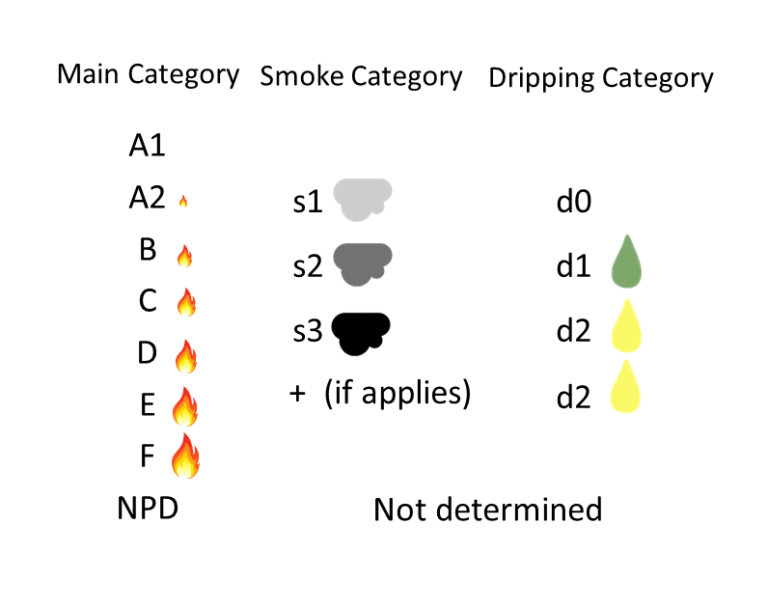
Based on the previous image, we can read the classification as follows:
B indicates that it has a limited contribution to fire, s2 denotes that it produces smoke of medium opacity and d0 means that it presents no drop of drops or particles.
The most common classifications that we find in the manufacture of insulated panels are:
- Rock wool insulated panel: A1. The highest
- PIR panel: B – S1, d0
- PUR panel: B – S2, d0
CHOOSING PANELS ACCORDING TO NEEDS AND FIRE RESISTANCE
As a conclusion, it should be noted that in order to choose insulated panels it’s not enough to determine the thickness of the core foam or the gauge of the metal, especially in buildings where the thermal issue and fire resistance is important, for example those that will be used intensively by humans or the if flammable materials will be held inside. It is extremely important to know the fire behavior classification of the sandwich panel that will be used either for roof, walls or floor.
If you want to make further inquiries about this or other European standards, you can directly consult the following links:
- Technical Building Code of Spain: https://www.codigotecnico.org/
- Spanish Association for Standardization: https://www.une.org/
